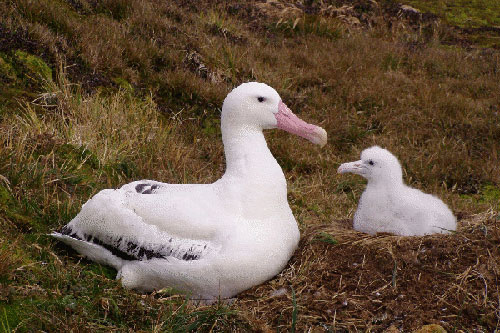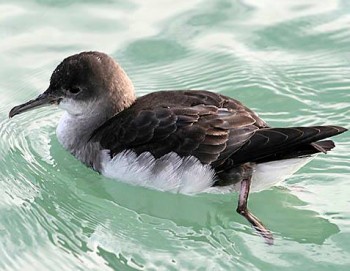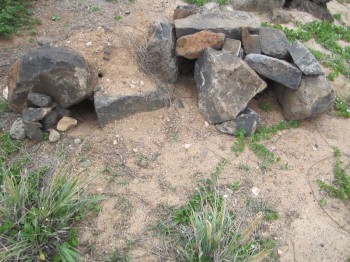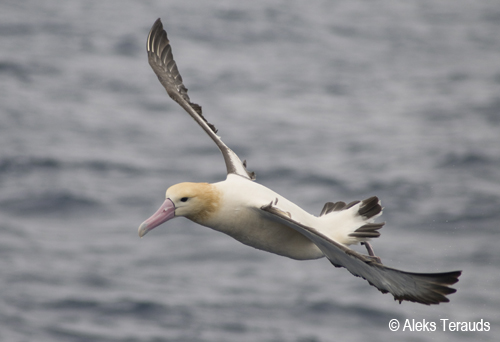
An old male Wandering Albatross and its downy chick at Marion Island
Photograph by John Cooper
Richard Schodde (Australian National Wildlife Collection, CSIRO National Research Collections Australia, Canberra. Australia) and colleagues have published in the journal Zootaxa on the taxonomy of the Wandering Albatross Diomedea exulans.
The paper’s abstract follows:
“On-going conflict in use of the name Diomedea exulans Linnaeus, 1758 for different taxa of the great albatrosses (Wandering Albatross complex) is resolved by neotypification, fixing the name to the large subantarctic form formerly often known as D. chionoptera Salvin, 1896. Application of all scientific names in the complex is reviewed, an annotated synonymy for the large subantarctic form is provided, available names for smaller, temperate-zone forms are listed, and unavailable and otherwise invalid names referable to the complex are identified. Syntypes of D. chionoptera and D. spadicea J.F. Gmelin, 1789 are lectotypified as well, fixing their names as synonyms of D. exulans to prevent possible disturbance to in-use names for the smaller, temperate-zone forms.”
Reference:
Schodde, R., Tennyson, A.J.D., Groth, J.G., Lai, J., Scofield, P. & Steinheimer, F.D. 2017. Settling the name Diomedea exulans Linnaeus, 1758 for the Wandering Albatross by neotypification. Zootaxa 4236, No 1. doi.org/10.11646/zootaxa.4236.1.7.
John Cooper, ACAP Information Officer, 09 March 2017


 English
English  Français
Français  Español
Español 


